Since Google is the biggest search engine in the world, everyone wants to get high organic traffic to their blog through it. In this post, I am gonna share with you a complete guide on how to use Google Search Console. This is a complete Google Search console tutorial. Here’s how you can submit your site to Search Console & get massive organic traffic to your blog.
Google Search Console (also called Google Webmasters) is a free tool offered by Google. It gives detailed information about the search analytics, search errors, and help you rank your fast for a specific keyword.
There are many benefits of adding your site to Google Search Console. Some of the top benefits are:
- Search Appearance reveals how your site appears in the search results.
- It gives you complete information about your Search analytics. ( Check Point 7 for more)
- Search Console helps you target users in a specific country. (Check Point 8)
- It gives a complete report of internal & external links to any page. (Check Point 9)
- You can easily view and fix crawl errors. (Check Point 6)
- Using Fetch as Google, you can index your website pages faster. (Check Point 5)
- It can help you view and fix robots.txt errors. (Check Point 10)
- It helps you fix any other search errors ASAP by sending you direct messages.
These are the some of the great benefits of using Google Search Console. After reading the below guide you will be able to know a lot more benefits.
[irp posts=”8″ name=”Step by Step guide to start a free blog in Blogger”]
Table of Contents
Detailed (A to Z) Guide on Google Search Console:
After reading this complete Google Search Console tutorial, you are able to:
- create your Search Console account.
- add your site on Google Search Console.
- submit a sitemap for your site.
- link Google Analytics account.
- index your blog posts fast.
- fix crawl errors.
- check search analytics.
- target users in a specific country.
- check links to your site.
- test Robots.txt.
- add users to your Search Console account.
If you need more help, let me know in the comment section 🙂

1. How to Create your Google Search Console account?
(Requirements: a google account)
All you need to have a Google account. Visit Search Console >> Start Now >> Login with your Google Account. After you log in with your Google account, you will be redirected to another page where you have to add your website. You can also take the help of the below image.
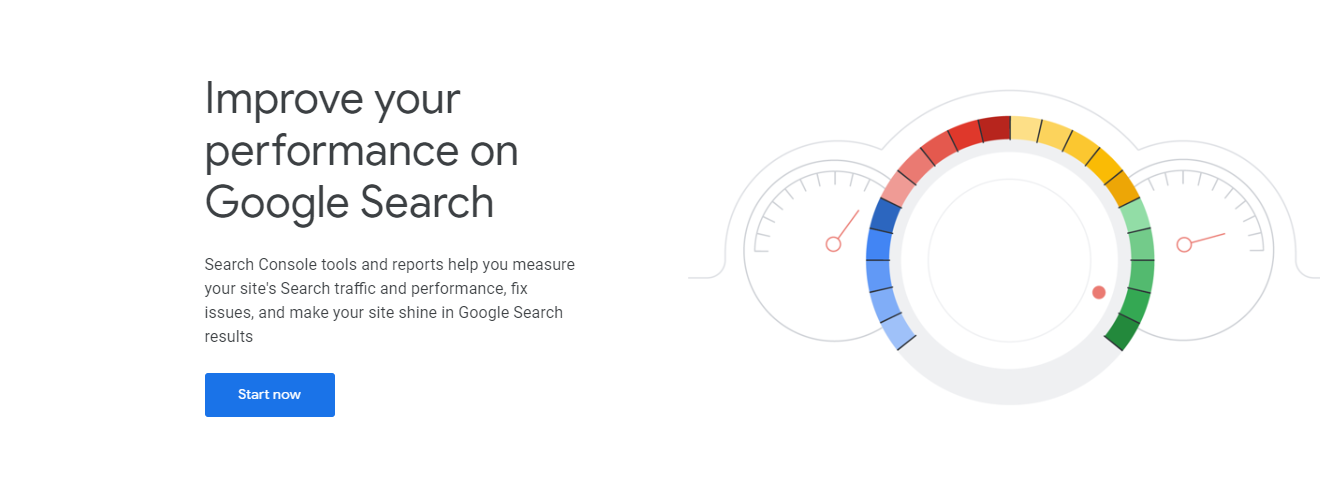
2. Add your Site to Search Console.
In step 1, you have successfully logged in by your Google account. Now it’s time to add your website to Google Search Console.
After login to your account, you will be redirected to a page as shown below:

Enter your web address and click on ADD A PROPERTY.
Note: Add your website complete address (e.g. https://www.example.com)
After you add your website to Google Search Console, you need to verify the ownership of the website. You can verify your site by using any of the following methods:
- By adding HTML tag to your website.
- Signing in to your domain name provider.
- By using your Google Analytics account.
- Using your Google Tag Manager account.
- By uploading a file to your root directory.
I’m using the first method (i.e. by adding HTML tag) to verify my site. You can use any of the above methods.
• Select the HTML tag from the list & copy the meta tag as shown in the below image. Paste the code under the <head> of your blog HTML.
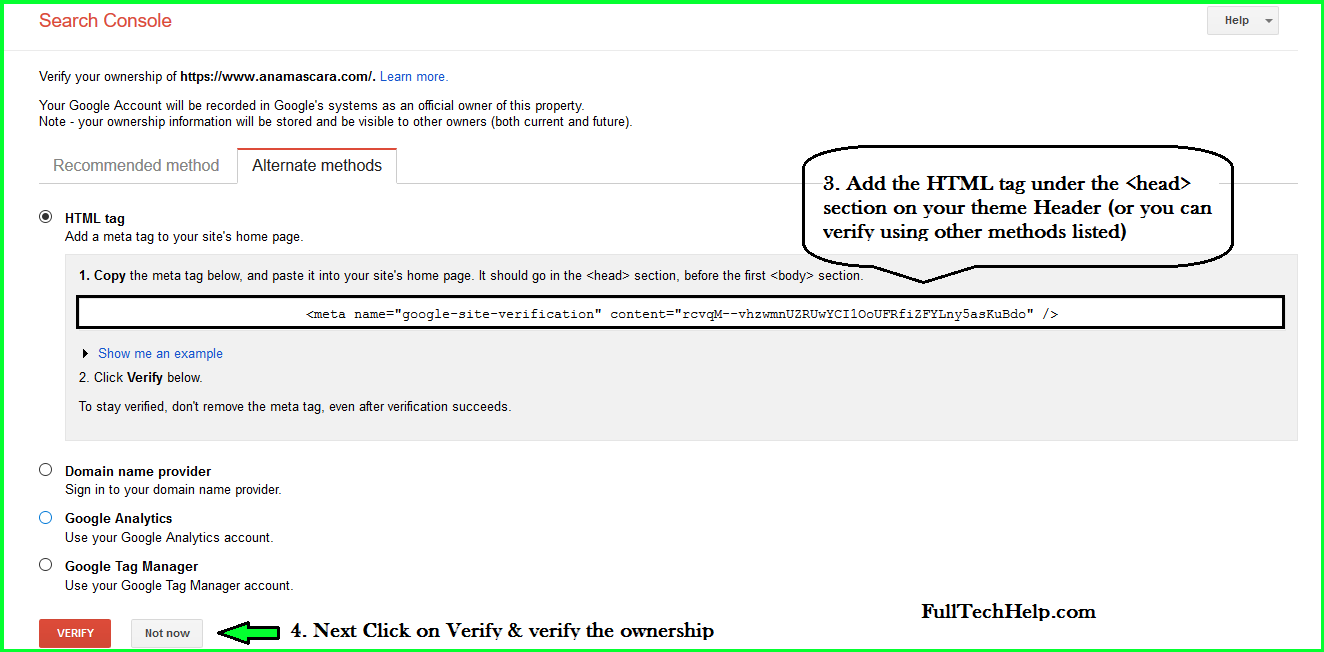
[irp posts=”300″ name=”Add Meta Tags to Individual Blogger posts – & Boost your SEO by 200%”]
(i). For Blogspot Users:
>>If you are a Blogspot user. Go to Theme >> Edit HTML & paste the above code just below the <head> and Click Save Theme.
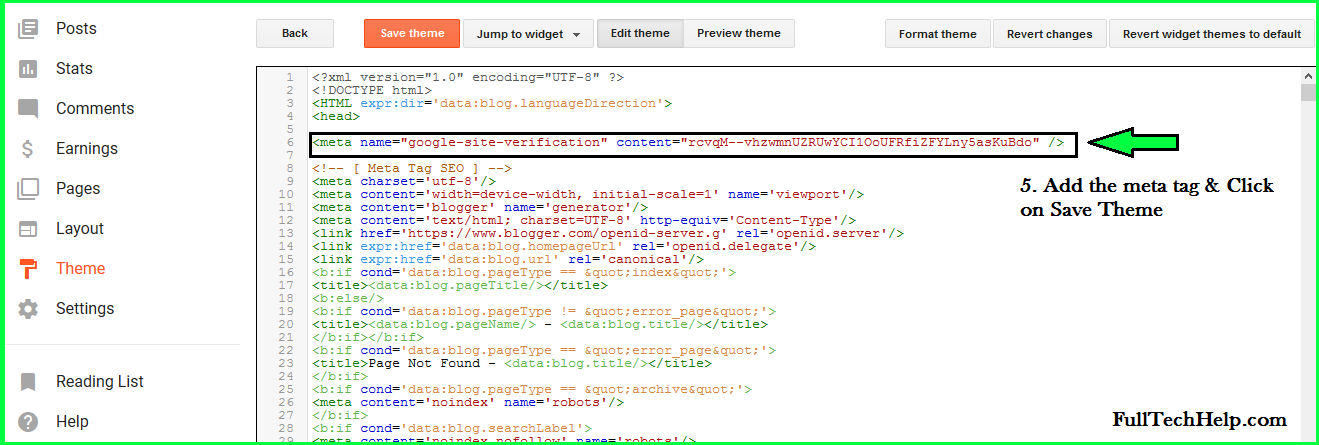
(ii). For WordPress Users
WordPress users can easily add meta tags to Theme’s HTML by visiting the below settings:
• Visit Appearance > Editor > header.php and add the HTML tag just below the starting <head> and click on Update File.

After you add the meta tags into your theme HTML, Click on Verify. That’s it. After verifying your ownership, you will get access to your Search Console dashboard. Here’s how it looks like:
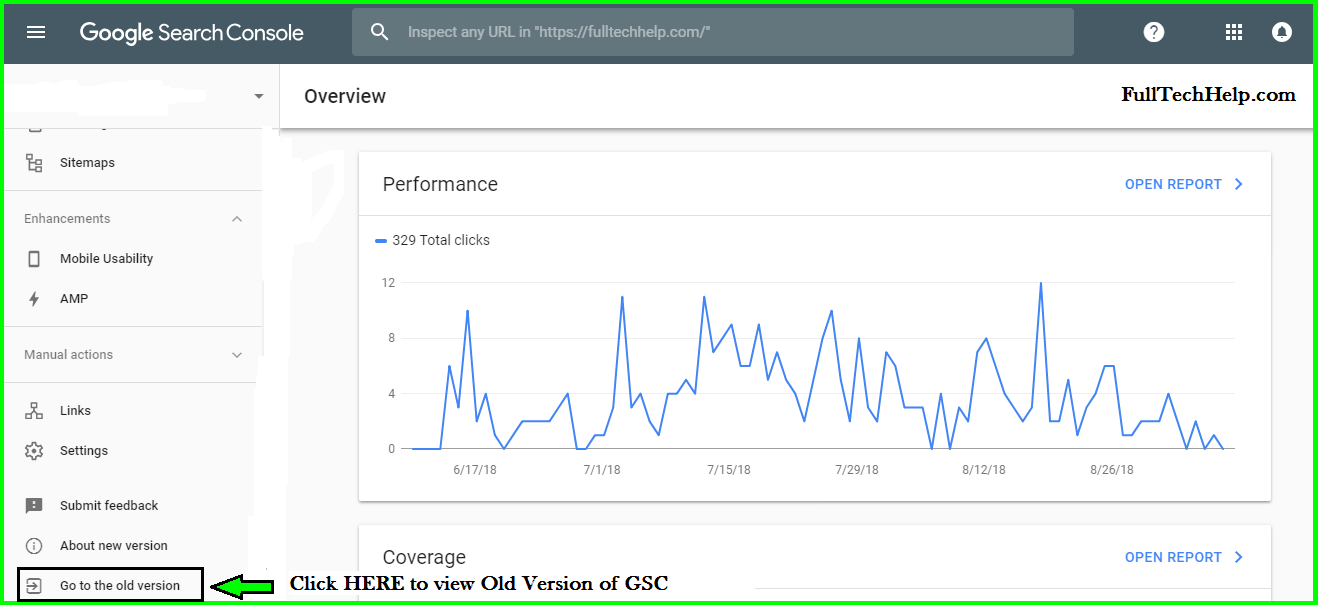
I have written the complete guide based on Old Google Search Console. So you can simply switch to the Old version of GSC by visiting Go to the Old version in your dashboard.

I have completed the first two parts. Next, we have to learn how to submit Sitemap to Google Search Console? Follow the 3rd step.
3. Submit Sitemap to Google Search Console
In simple words, a sitemap is an XML file containing URL of every webpage of your website. Submitting Sitemaps to webmasters is important because they make it easier for Google to find your site’s pages.
I have discussed the complete guide for both Blogspot as well as WordPress users below:
For Blogspot Users:
If you have less than or equal to 500 posts in your Blogspot blog, then you can add the below sitemap after your URL into Step 2.
atom.xml?redirect=false&start-index=1&max-results=500
If you have more than 500 posts (or less than 1000), you have to add an extra sitemap as quoted below.
atom.xml?redirect=false&start-index=501&max-results=1000
In this way, you can easily add the sitemap for your blog into Google Search Console.
>> Visit Sitemap under Crawl Section in your Dashboard & Click on ADD/TEST SITEMAP.

>> Copy the XML Sitemap from the above and enter into the popup & Click Submit.
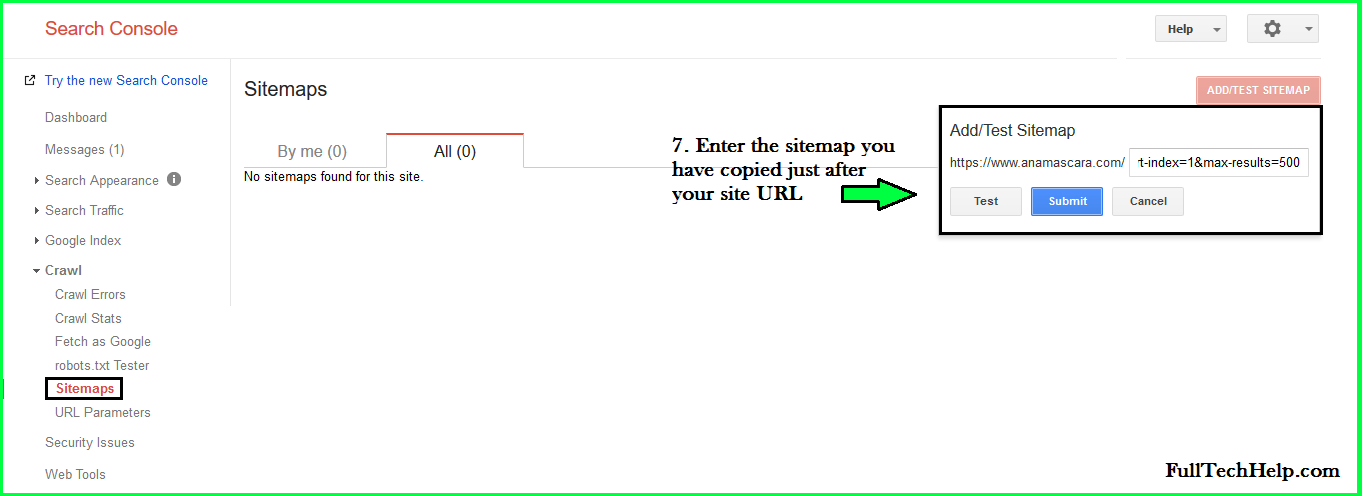
That’s it, you have successfully submitted Sitemap for your Blogspot blog into Google Search Console. If you also have a WordPress blog, you can follow the below steps.
For WordPress Users:
WordPress user can simply use Yoast SEO plugin which automatically generates XML Sitemap for your website. All you need to do is to install Yoast SEO and visit the following settings:
>> Visit SEO (in Yoast SEO) >> General >> Features >> XML Sitemaps (Make sure it is turned ON) >> Click on See the XML sitemap

After you Click on See the XML Sitemap, copy the link address & paste it to the Search Console.

Now, go back to Google Search Console and add the above sitemap address. Check the below snapshot for better understandings.
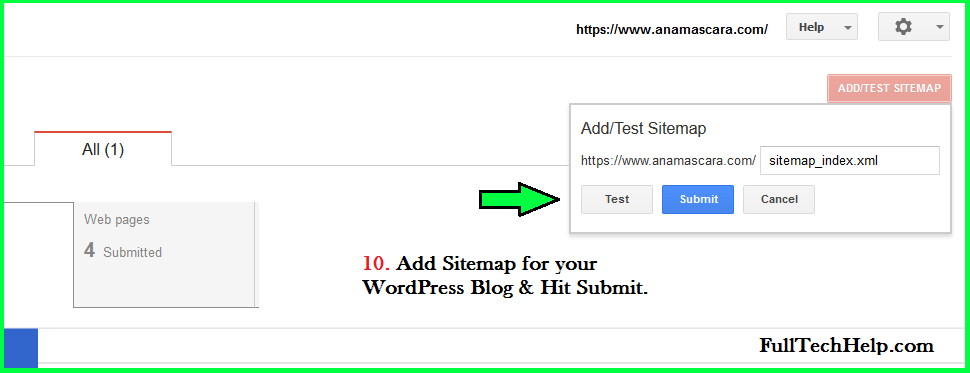
That’s it. You have successfully submitted Sitemap for your WordPress blog. In this series let’s move to the next part i.e. how to link Google Search Console with Google Analytics.
4. Link Google Analytics with Search Console
Linking Google Search Console with Google Analytics make it easy to see search ranking data along with page level data at the same place. This integration saves a lot of time by pulling search console data into your analytics.
Follow the below steps and integrate Google Analytics with Search console.
Step 1: Settings >> Google Analytics Property
Click on the Setting icons and from the drop-down menu, Open the Google Analytics Property.
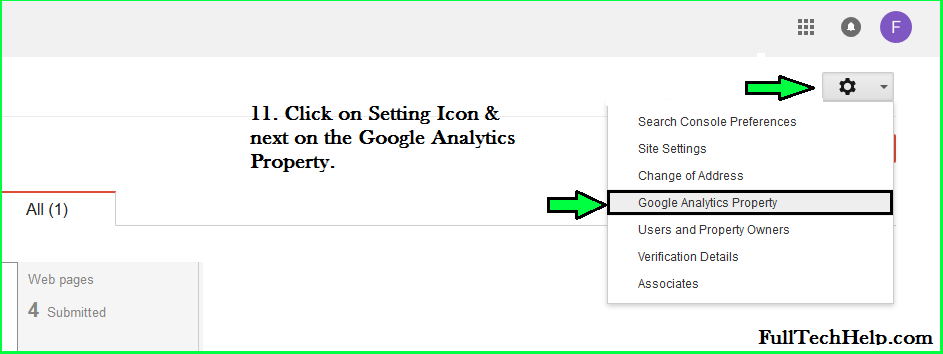
Step 2: Add your Analytics account
Next, you need to select your Google Analytics account from the list & Click on the Save button. If you don’t have an analytic account, click on Create Google Analytics account to create a new one.

After you click on Save, your Analytics account will be linked to Search Console.
We have completed 4 important parts of this guide. Keep going there’s a lot more. Let us know how to index your blog posts fast.
[irp posts=”78″ name=”HTML Basics Every Blogger Should Know !”]
5. Index your Blog Posts Fast : Fetch as Google
It takes as little as 4 days or up to 4 weeks for your new website or web page to be crawled & indexed by Google. But you can speed up this process by using a simple tool called Fetch as Google. All you need to do is to submit your new pages or blog posts in it using Search Console.
Here is a step-by-step guide on how to use it:
Step 1: Visit Crawl >> Fetch as Google
Under the Crawl Section, visit Fetch as Google. Enter your Url & hit Fetch. It may take up to a minute to complete the process. If you want to fetch the homepage of your blog, leave the URL blank and Click on Fetch.
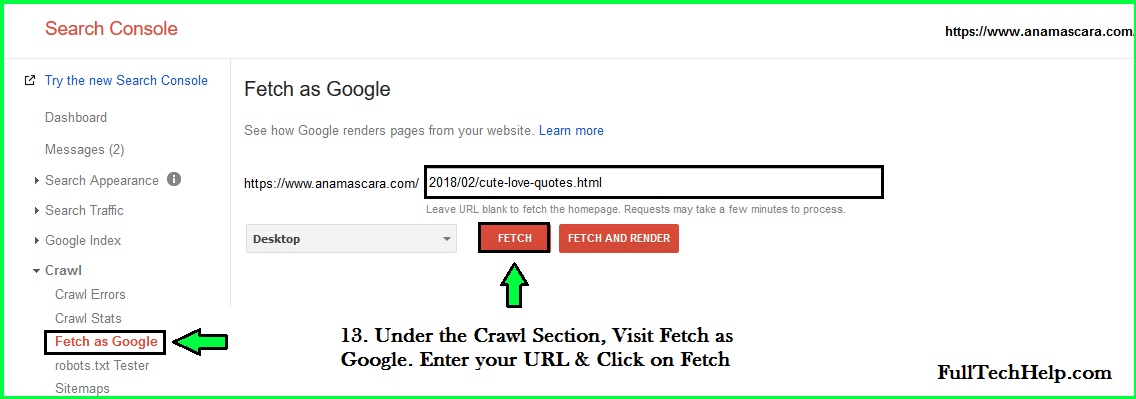
Step 2: Request Indexing
After you click on Fetch, It shows a message i.e. Complete as shown in the below image. Now you need to Click on Request indexing.

Step 3: Choose Fetching Method
After you click on Request Indexing, a pop up will appear on your screen where you need to solve the Captcha, Choose any of the two fetching methods & hit submit.
There are two ways in which you can Fetch your blog posts:
- Crawl only the URL you have submitted.
- Crawl the URL you have submitted & its direct links.
In the first method, only the URL you have submitted is crawled by Google. While if you choose the second method, all the direct links to the URL you have submitted are also crawled by the Google bots.
Note: Sometimes one of the two methods don’t work and shows an error message. In this case, you can use another method or wait for few days till the next fetch.
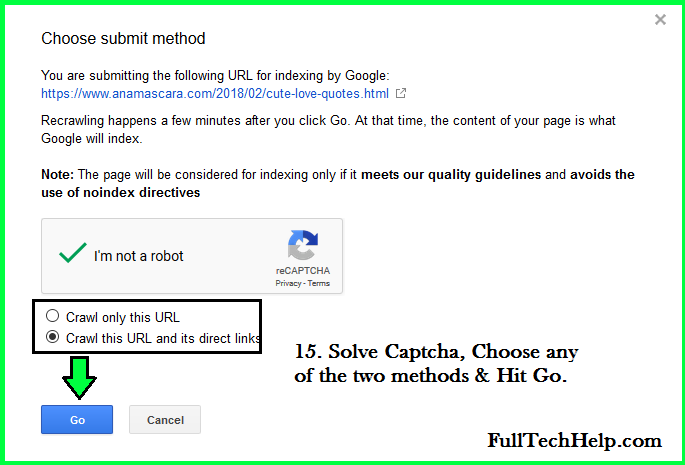
That’s it. After you hit Go, your URL will be submitted to Google. That’s how we have completed Fetch as Google. Next, let us discuss how to fix crawl errors.
[irp posts=”176″ name=”How to get a Free Domain name for your Blog?”]
6. Fix Crawl Errors
In this part, I will discuss how to fix URL errors by using Google Search Console. When you see this kind of error for your URLs, it means that Googlebot couldn’t access your URL.
Here, I will tell you how to fix 404 pages. In the Crawl Errors section under Crawl, visit URL errors. Here you find a list of all 404 error pages your site have.
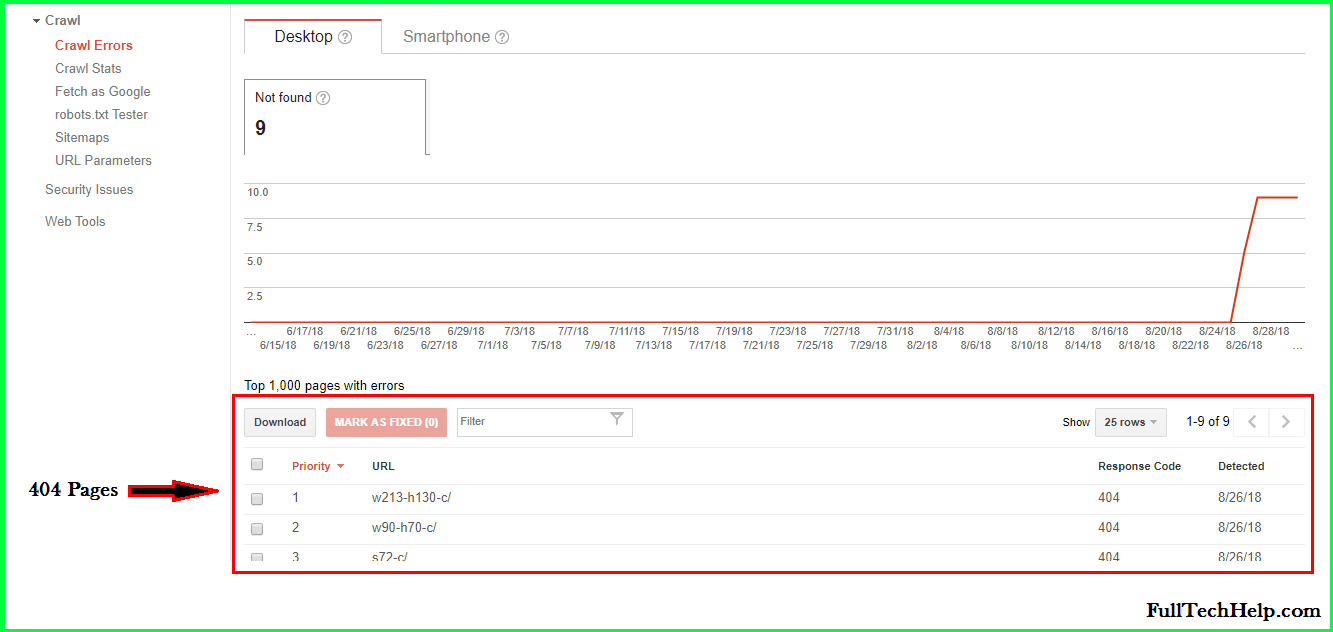
In order to fix these errors, you have to redirect these URLs to other pages. Also, you can link out to other blogs. Again for redirecting these URL’s, I use Yoast SEO Pro plugin.
If you have already installed Yoast SEO Pro, Visit: SEO >> Redirects and create 303 Permanent redirects.
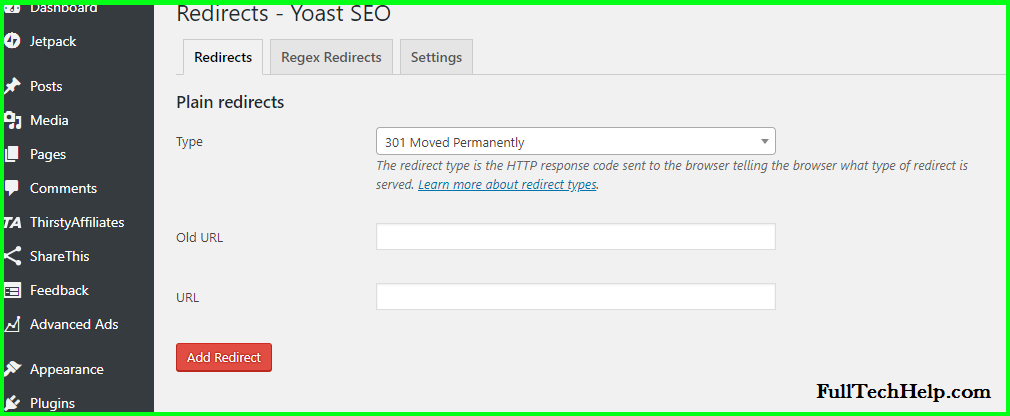
Here is a list of other free plugins that you can use to create redirects: 301 redirect Plugins List.
7. Check Search Analytics
Search Analytics show you complete information about the appearance of your site in search listings. It consists of 7 grouping options.
Grouping Options:
>> The first option (i.e. Queries) shows you the list of keywords that users search and your site appears in search results.
>> Using the second option, (i.e. Pages) you can view a complete list of pages of your site that appears in search results.
>> The third option (i.e. Country) gives you complete information about the geographic locations from which the searches are coming.
>> By selecting the Device option, it will show you the list of devices that are used to search. Example: Desktop, Mobile, Laptop etc.
>> The next option (i.e. Search Type) shows you whether the search is Web Search, Image Search, Video Search or else.
>> Search Appearance lets you use some special filters like Rich Results, Web light Results, AMP article rich results, and AMP non-rich results.
>> Finally the last option (i.e. Dates) help you filter the above results to a certain timeframe (e.g. Last 7 Days data).
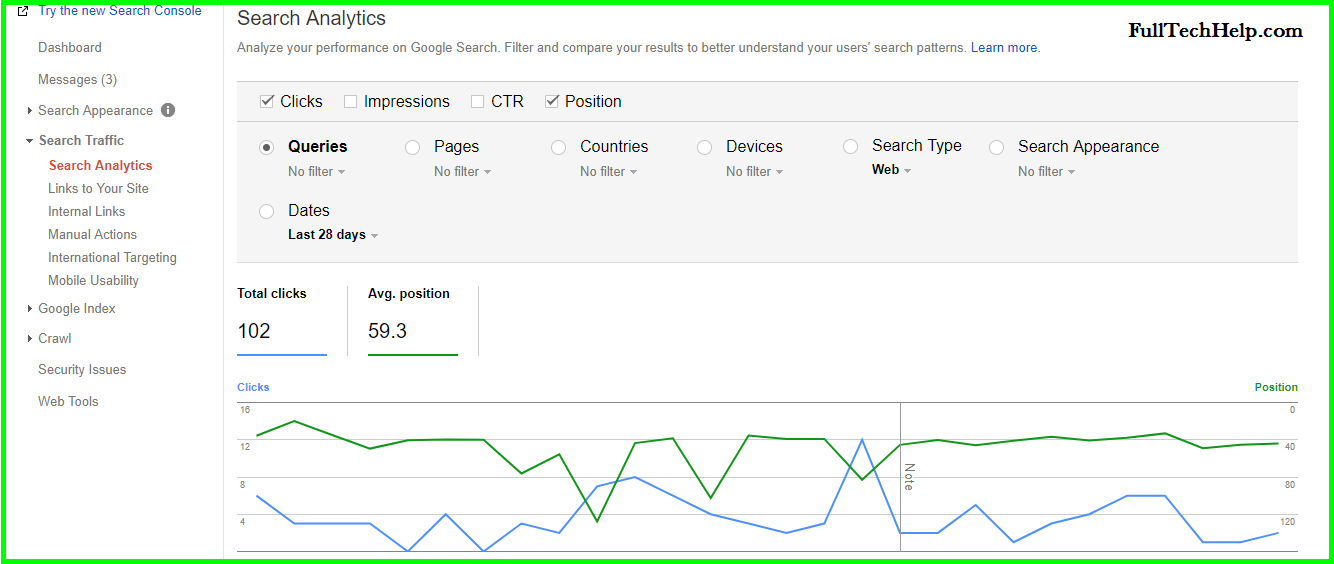
Filters:
Along with these 7 grouping options, Search Analytics also includes 4 filters. I have briefly discussed the use of all the four filters below:
>> Clicks: It shows you the number of clicks you have got from the Search Engine Results Page (SERP).
>> Impressions: Selecting this filter helps you know how many of search results are seen by visitors.
>> CTR (Click Through Rate): CTR is calculated by dividing the Click Count with the Impression count. Using this filter shows you the average CTR of any search result.
Next, you need to optimize your content with low Clicks and high impressions. These results can be improved. Here is a complete guide on how to optimize your content for SERPs.
8. Target Users in Specific Country
Getting targeted traffic from Western countries like U.S. and U.K. is a good deal. Due to their high purchasing power, traffic from these countries converts better in terms of affiliate marketing.
You can easily target users of your site in a specific country by following the below guide:
Step 1: Visit International Targeting Under Search Traffic
Step 2: Select your Country from the list and add the checkmark as shown in below image.

That’s it. Now users from the country you have selected are automatically targeted by Google Search.
9. Check Links to your Site
Do you know? You can easily find all the links to your site for free using Google Search Console. This is the best thing I love about Google Search Console.
You can also use tools like SemRush for finding backlinks of your as well as your competitors website.
>> Visit Link to this Site under Search Traffic to view the complete list of links to your site.

10. Test Robots.txt
Robots.txt tester is used to test whether a URL of your blog is blocked by Google bots or not.
>> Click on robots.txt tester under crawl section

>> Enter your URL into the below URL bar (at the bottom of the page) and hit Test

After you hit Test, it will show you whether your site is blocked by Google bots or Allowed. In case it shows Blocked, then this tutorial on how to fixed blocked robots.txt will help you.
11. Add Property User to Google Search Console
This is the last part of this guide. Here I will tell you how to add property users to Google Search Console. Follow the below steps:
Step 1: Click on the drop-down setting icons on the top right corner.

Step 2: Visit Users and Property Owners from the list.
Step 3: Next Click on Add a New User

Step 4: Enter the Email of new User, Select Permission & hit Add.
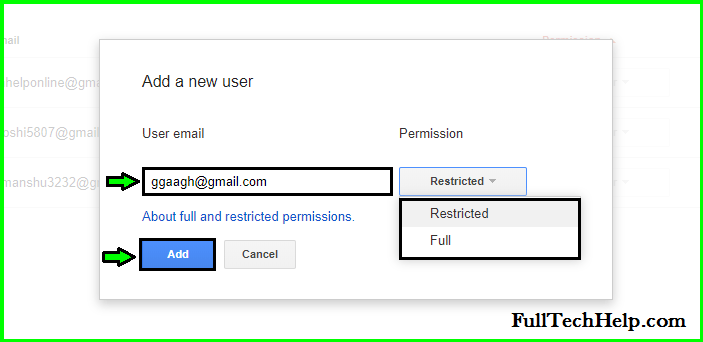
That’s it. Now an email will be sent to the new user from which he can access your Google Search Console.
Check Out: Add PayPal Donate Button to Blogger & make supplementary income
This is how we have completed 11 important parts of Google Search Console. You can also use the new Google search Console for the same. Let’s move to the final conclusion.
Final Words:
In this complete post, I have discussed a detailed guide on how to use Google Search Console. It takes lots of efforts while writing this post. You can leave a comment to appreciate my efforts!
In this post, I have not discussed all sections of Google Search Console but tried to cover most of them. If you need additional information about any other section, feel free to drop a comment. I will try to answer your queries ASAP.
Our Email Newsletter here: Subscribe Here
Best Web Hostings: Bluehost | HostGator | InMotionHosting
Best SEO Tools: SemRush | ahrefs | KWFinder
[irp posts=”273″ name=”How to change the Address Bar color of your Site for Mobile Browsers?”]

Wow such an great post it help me a lot.. Keep writing these type of wonderful post..
Thanks and Best wishes
Thats too much for me to take in. Well, I think I need your help for seo.
Really great post. Thank you for this guide. I really need it!
This was a very easy to follow guide, thanks!
Great post. I think the search console is very useful but I have a lot to learn about it. I have a few crawl errors that I will be looking into. Thanks,
Thank you so much for this! This is very helpful and I’m sure others agree!
Great tutorial, very in depth. Seo is my weakness. I can’t ever seem to make my posts rank or even get the green light most of the time. I will bookmark and read when my brain can actually consume this knowledge. Thank for your educating the nontechies like me.
Informative post. I will definitely be using this to set up console for my blogger site. To be truthful, I felt it only works on WordPress .
Thanks for sharing this very detailed post. It is certainly a great help for me. Regards.
Goodness, looks very complicated to me. But I have to learn all so I would like to say thank you so much for sharing one great informative post! Now, where should I start? LOL.
I’m not so knowledgeable when it comes to computer lingo so when I did this, it was quite a struggle. This is definitely so useful!
Wow, there is a lot of ton of useful information! I am guessing this is more targeted for those who have their own domains, right? I pinned this so I can read it when I get my own page.
I love how you broke it down and made it easy. Thanks for this post!
Thanks for the information. Helps much to understand Google more. They rule the internet!